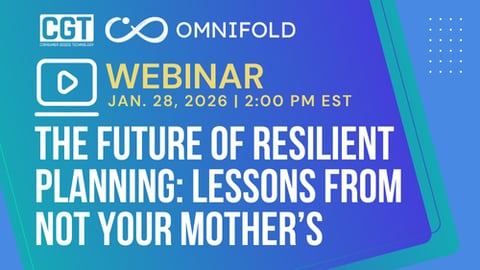Toilet Paper? Who Knew? Using Real-Time Data to Shift Inventory During the Pandemic
Chances are that no matter where you were located in the U.S. during the height of the COVID-19 shutdown this spring, you had a difficult time finding and buying toilet paper.
According to Georgia-Pacific, the makers of Quilted Northern toilet paper and other paper products, the shelter-at-home rules implemented across the country led to an estimated 40% increase in use of toilet paper.
At the start of the pandemic, we were also surprised that toilet paper would be the coveted consumer item. Unprecedented situations, however, are the perfect opportunity to maximize real-time data, especially as it pertains to inventory. Regularly studying consumer trips and basket-level data in convenience retail could have helped c-store operators recognize the trend and shift their inventory to accommodate that and other consumer buying habits during the pandemic.
Having the Right Information
According to recent data from PDI’s Consumer Behavior Report, convenience store trips have declined year over year. But there’s also some good news right now: The decline is slowing down and shoppers are spending money. Perhaps that is because for many consumers, the local convenience store has become their “go-to” grocery store now to purchase frozen food, milk, beer, paper towels and other essential items. It is certainly the case for many small towns where big-box retail options are scarce or simply less preferred during a pandemic.
The data also shows that even though there have been fewer trips to the convenience store, basket size has increased and consumers are definitely spending more money with each transaction.
As areas around the country started easing lockdown restrictions, it was even more important than ever that convenience retailers and consumer goods brands ensured they had the right information to serve their communities and provide the items customers needed. The new normal is still emerging, and meeting needs in a relevant manner can help maintain some new behaviors shoppers have adopted through the crisis. Consumer trip, basket-level data and analysis will enable stores to meet these needs.
Meeting Consumer Needs
Traditionally, a quick trip to the convenience store has resulted in grabbing a little treat such as a candy bar. However, candy sales have been particularly hard hit during the healthcare crisis, and only recently have they begun to show positive gains again. Sales for immediate consumption products were also down overall, while sales for multi-pack items and other products that consumers can fill their pantries with have risen. Sales of frozen food items have seen an uptick, and a constant throughout the pandemic is the sale of alcohol, cigarettes and large pack items.
In the past, c-stores have been able to rely on historic data to understand the buying habits of consumers in times of a crisis such as a hurricane or snowstorm, which afforded them the opportunity to stock up on milk, bread or even pop tarts. But these times are unprecedented, and the environment is nothing like we have ever lived through. Addressing business changes due to disruptions requires timely actions; “first to market” makes a difference.
Making Adjustments
In the c-stores we have seen some drastic moves, especially in the non-editable grocery category. C-store operators have had to adjust their inventory as they were selling products that they would normally sell in one year in only one week.
C-stores have moved toward selling larger pack sizes because consumers have been purchasing products in bulk, not knowing when they might be able to go out to the store again to stock up on supplies.
Usually, future consumption in c-stores is not a big part of the retailer’s inventory. But, c-stores have changed how they met the needs of the pandemic shopper by accepting larger future consumption orders from toilet paper to batteries to beer. Going forward, the opportunity exists for c-stores to make the most of this changed shopper behavior and address consumers’ needs on multiple front.
Relying on the Data
The pandemic has forced c-stores to predict the new buying habits of the consumers. But that is nearly impossible without the use of real-time data tools to identify inventory needs, track rapidly changing buying trends and assess our new normal. As operators look at basket-level data, they should consider the following in order to have trustworthy and real-time accurate data analysis:
1. Closely monitor what comes in the backdoor to what goes out the front door.
2. Utilize your data to tell the whole story from getting products from point A to your store shelves.
3. Offer promotions on the most relevant item varieties; for immediate consumption product to help restore lost sales, and on future consumption product to maintain at least some of the changed behavior.
4. Continue to offer some of the new conveniences and help meet the needs of the more cautious shoppers, with online ordering, and alternative pickup methods.
As we look to the future, we will hopefully see trips and revenue gradually rebound as consumers feel more comfortable and safer about going back to the stores.
Dafna Gabel is VP of insights for PDI.





